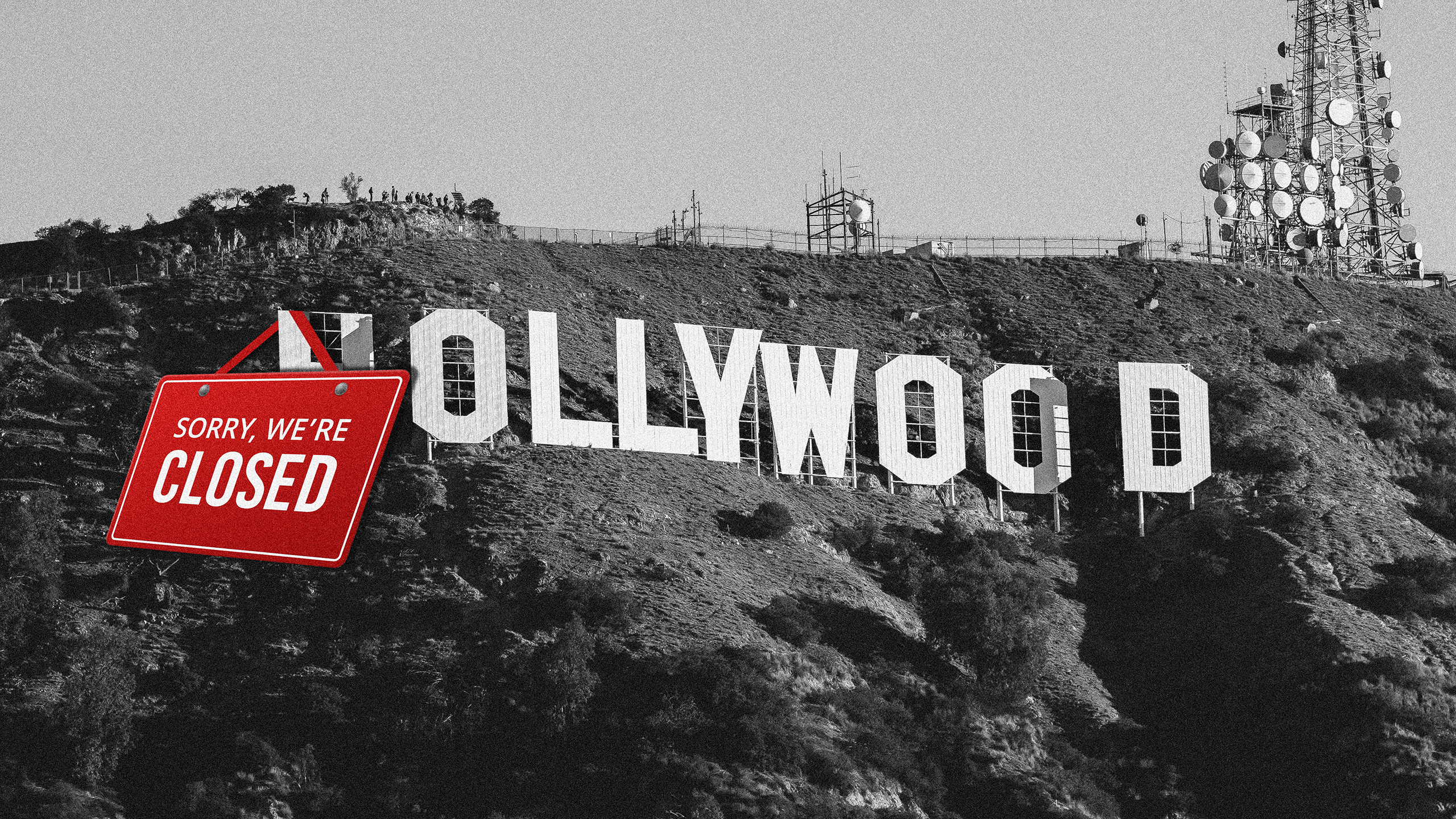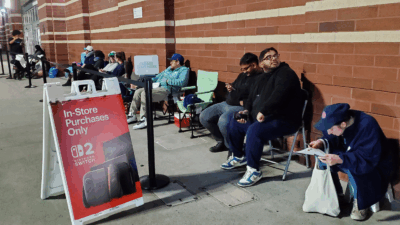Hollywood Outgrew Los Angeles. Now It’s Outgrowing America.
As US-based streaming platforms chase audiences around the world, they’re increasingly committing to international productions.

Sign up for smart news, insights, and analysis on the biggest financial stories of the day.
In the heart of the city lies Television City, a massive studio space home to many CBS productions including The Price is Right, Family Feud, and The Young and the Restless. For years, its owners, Hackman Capital Partners, have been attempting to orchestrate a billion-dollar expansion. But recently, its neighbors, including noted mall developer and erstwhile LA mayoral candidate Rick Caruso, have served as the opposition — and last month they filed a lawsuit alleging violation of the California Environmental Quality Act in an attempt to block its construction.
For the local TV and filmmaking community, the lawsuit is just the latest battle in an existential war to keep Hollywood production in Hollywood, where, these days, there’s a lot less filming going on. At least, when compared to the rest of the country — and beyond.
That’s because major Hollywood studios are increasingly chasing generous subsidies, tax breaks, and other financial incentives to conduct their TV and movie production in states, cities, and municipalities far outside the traditional filmmaking hub of Southern California. In the process, Los Angeles, a veritable industry town, has started to lose its biggest industry. At stake? A $30 billion annual economic engine for the local economy, according to LA’s Economic & Workforce Development Department.
Losing gigs to film crews in Atlanta or New York City isn’t Hollywood’s only problem. As per usual, Silicon Valley insurgents — Netflix and Amazon — also are disrupting the status quo.
As US-based, globally dominant streaming platforms chase audiences around the world, storming into new countries one by one, they’re increasingly committing to international productions that can cater to audiences within specific borders — and, hopefully, beyond.
Which means that the entertainment industry has not just outgrown Los Angeles. It may be outgrowing the US.
A TMZ Exclusive
LA’s status as a production hub is no accident. As Hollywood grew in prominence in the 20th century, the labor unions and the studios eventually agreed on what was referred to as the Thirty Mile Zone (yes, TMZ), a rule that stipulated that studios were off the hook for transportation, room and board, or other crew expenses so long as production occurred within a 30-mile radius that encapsulated the greater LA metropolitan area. Keeping things local meant keeping things cheap. That kept production centered in LA, which in turn brought talent (eager aspiring filmmakers) flowing into LA, which ensured more production could occur in LA, which brought more talent flowing into LA, which… you get it.
Skipping Town: But by the end of the 20th century, the rest of the country wanted in on the glitz and glamor of Tinseltown — and they were willing to pay for it. States, cities, and other municipalities around the country began offering generous subsidies and tax breaks to lure film and TV production. And slowly but surely, LA began to lose its place as Hollywood’s favored shooting hub.
Breaking Bad, for instance, was originally written to be set in Southern California — until producers decided to take advantage of generous financial incentives, courtesy of New Mexico. Vancouver, Canada, has grown into the third-largest production hub in North America, thanks in large part to generous provincial and federal tax credits. The film and TV industry has collectively pumped some $30 billion into the city’s economy in the past decade, according to the Vancouver Economic Commission, employing as many as 72,000 workers annually (and it frequently plays the role of major American cities in Hollywood productions).
NBC has dedicated practically half of its primetime programming to the Windy City — Chicago PD, Chicago Fire, Chicago Med, Chicago Justice, and, we’re hoping soon, Chicago Newsletter.
Just Peachy: All the way across the Sun Belt, a true Hollywood rival has emerged: Georgia, which offers an incredibly generous 30% credit on film and TV production costs. It’s estimated the state has certified over $1 billion in tax credits in recent years to productions — which is why a “Made in Georgia” logo keeps appearing in your favorite movies and TV shows, be it Stranger Things, the originally LA-set Fast & Furious franchise, or the vast majority of installments in the Marvel Cinematic Universe.
In 2016, more feature films were shot in Georgia than California for the first time. It’s projected the state will have more studio space than California by 2027, according to The Georgia Department of Economic Development, as filmmakers are in the midst of a $2.9 billion expansion of studio space across the state.
LA Plays Itself: In other words: The inherent value of operating within the TMZ has long been obliterated. But in some ways, productions fleeing LA for new homes across the US and Canada is a Hollywood success story. The massive demand for Hollywood-quality productions created a content boom the city simply couldn’t support on its own. From 2002 to 2022, the number of original scripted TV series produced per year exploded from around 182 to 600, according to FX CEO Jon Landgraf, who has been tracking the trend for years.
Still, LA isn’t taking a victory lap as productions — and jobs — head elsewhere. To support the local economy, California Governor Gavin Newsom last year announced a proposal to increase California’s Film & Television Tax Credit Program from $330 million annually to $750 million. According to one government study, every $1 in credits approved by the program generates $16.14 in GDP, $8.60 in wages, and $1.07 in initial state and local tax revenue from production.
And while the increased credits may help LA compete with the rest of the US, it’s unlikely to reverse the trend.
It Came From Outside the US: Flash back some 25 years and Hollywood was on the verge of a major discovery: Its most valuable intellectual properties — read: superheroes, star warriors, witches and wizards, cartoon creatures, and other fantastic adventurers — were internationally recognizable brands that just so happened to have not-so-culturally-specific, easily-translatable stories. Through most of the 21st century, Hollywood increasingly tapped foreign markets to turn its mega-franchises into global box office smashes (there’s a reason why yearly top 10 box office lists have become increasingly dominated by sequels, prequels, remakes and reboots).
Now, an inverse trend is occurring, and it’s being led by already-global platforms like Netflix and Amazon.
As Netflix pioneered the streaming space a decade and a half ago, it began running into a problem: It needed more content. The streamer had yet to fully create its own non-stop content pipeline, and it could only license so much content from its supposed competitors. So it began licensing shows made just about everywhere else — and subscribers sure didn’t seem to mind. British shows like Peaky Blinders and Great British Bake-Off became global hits, as did Spanish series Money Heist. By 2018, Netflix had opened up an Asia division in Seoul, South Korea. At the time, now-CEO Ted Sarandos told New York Magazine: “The exciting thing for me would be if the next Stranger Things came from outside America. Right now, historically, nothing of that scale has ever come from anywhere but Hollywood.”
He didn’t have to wait long.
The Parasite Moment: By 2020, the South Korean-made indie film Parasite became the first foreign-language film to ever win Best Picture at the Academy Awards, and turned into a sleeper hit in non-US markets. It marked a watershed moment for the industry: audiences will accept good content no matter where it’s from.
By 2021, Netflix had released the South Korean drama Squid Game, which became the most watched series in the history of the platform. Now, a full 60% of Netflix’s roughly 300 million subscribers come from outside the US. And Netflix wants to cater to each market — and will gladly accept any other curious viewers.
“It’s the same concept as a movie studio making a movie for theatrical release, and everything after theatrical is gravy,” Michael Pachter, sector analyst at Wedbush Securities, told The Daily Upside. “Netflix is making a Korean language show or an Indian language show for Korea or India, and then they know that an Indian show will work in Pakistan or Nepal, and they know that a Korean show will work in America. And so they can keep taking those chances, because they get their payback in the local market.”
According to an Ampere Analysis report published in November, Netflix has allocated 51% of its $15.9 billion film and TV budget to international productions. Both Amazon and Netflix are ordering more productions outside the US than in the US, according to Ampere Analysis. The kicker: Most international productions can be made for anywhere between 50% and 25% of the cost of something made in the US (partially because the star actors, so far, are not internationally recognizable and can’t demand major paychecks).
It’s an infrastructure their peers can’t compete with.
“It’s leverage that the other guys don’t have. [WarnerBros Discovery] to some extent does, Disney, to some extent does, but Paramount doesn’t and Peacock doesn’t,” Pachter said. (Disney, for instance, is starting to see demand share for its mega-franchise IP start to slip — after betting big recognizable brands would help it win the streaming wars.)
“Is Peacock going to green light a Korean show if they don’t have any Korean subscribers? No, they just can’t do it,” Pachter said.











